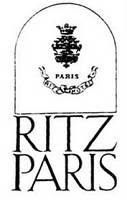CAFC Partially Reverses TTAB in Paris Ritz Oppositions
Five trademark applications filed twenty years ago by The Ritz Hotel, Ltd. (owner of the Paris Ritz) have finally cleared the opposition hurdle. In a precedential opinion, the CAFC in Shen Mfg. Co. v. The Ritz Hotel, Ltd., Appeals Nos. 04-1063, -1076 (Fed. Cir. Dec. 17, 2004), reversed the part of the TTAB's decision that had refused registration of two marks, and affirmed the part that had dismissed Shen's opposition as to the other three.

The Ritz sought to register the marks PUTTING ON THE RITZ for shower curtains, RITZ PARIS RITZ HOTEL and Design for dinnerware, the same RITZ PARIS RITZ HOTEL and Design mark for various floor and wall coverings, RITZ for cooking and wine selection classes, and THE RITZ KIDS for clothing. Shen succeed at the Board level in preventing registration of the last two marks under Section 2(d), relying on its use of the mark RITZ since 1892 for various textile items, including dish towels, potholders, aprons, bathroom towels, and ironing board covers, as well as for various other textile items.

The CAFC first considered Shen's assertion that its RITZ mark is famous and entitled to enhanced protection under Section 2(d). Agreeing with the TTAB, the court found inadequate Shen's evidence of $5 million in annual sales, use of its mark for more than a century, and hundreds of thousands of dollars in annual advertising expenditures. Shen's evidence "does not compare in terms of sales, advertising, or media interest" with that in other cases in which the CAFC has found fame.
As to the marks, the CAFC agreed with the Board that PUTTING ON THE RITZ is sufficiently different from RITZ to avoid a likelihood of confusion. It reached the same conclusion as to the two RITZ PARIS RITZ HOTEL and Design marks (shown here):

Finally, as to the mark THE RITZ KIDS, the TTAB had dubiously found the goods related because the hotel's goods included gloves, and Shen's barbecue mitts are a kind of glove. Then, relying on this "partial identity" of the goods, the Board opined that a lesser degree of similarity of the marks was required to support a likelihood of confusion finding. The CAFC, however, found the goods unrelated and the marks dissimilar, and it therefore reversed the Board's ruling.
There was no mention in either the Board's opinion or that of the CAFC about actual confusion or the lack thereof. One would think, had confusion been likely between the marks in question, some evidence of confusion would have arisen over the century of simultaneous use of the RITZ marks by the parties. Somehow I doubt that many people would associate RITZ brand potholders and ironing board covers with the ultra-posh Hotel Ritz in Paris.




0 Comments:
Post a Comment
<< Home